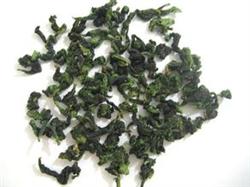Application and cultivation of Lycium barbarum

As a famous medicine for nourishing, strong and anti-aging, Chinese wolfberry is well known. Chinese wolfberry not only has high medicinal value, but also has edible and ornamental value. 1. Berries with high medicinal and edible value are used in medicine, which contain carotene, vitamins (A, B1, B2, C), betaine, amino acids, fat, protein and sugars. Pharmacological tests show that it can enhance human immunity, inhibit the growth of cancer cells and increase blood. The root bark of Chinese wolfberry (ground bone bark) is used as medicine to cool the blood and clear the lungs and reduce fire. The seedlings (Tianjing) or tender stems of Chinese wolfberry are wild vegetables in early spring, which can be fried or cooked in cold salad, with a slightly bitter and delicious fragrance, as well as the effect of eliminating annoyance, invigorating heart, clearing heat and detoxification. Chinese wolfberry leaves can be dried in the sun instead of tea, clearing heat and diuresis, invigorating the stomach. There is a folk dietotherapy prescription for ophthalmopathy: 150 grams of fresh leaves of Chinese wolfberry and 150 grams of glutinous rice. 2. Lycium barbarum, a good tree species for courtyard beautification, has entered the group as a fruit-watching flower, its fruit period is 6 mi 11 months, and the full branches of fruit are bright red and bright after flowering. If it is a potted plant, the fruit will remain as red as ever in winter. Chinese wolfberry can also be bred into a tree, setting up a pillar first, leaving a thick stem, cutting it as much as possible, and pruning it to promote it upward. After several years, it can become a courtyard tree more than 2 meters high, or it can be planted on a rockery to make its stone grow through a hole. 3. The adaptability is wide and easy to plant Lycium barbarum L. has strong sprouting ability, while many new branches are sent out from April to August every year, tillering seedlings grow from the roots, and they are cold-tolerant, light-loving and saline-alkali tolerant. Its reproduction can be divided into sexual reproduction and asexual reproduction. Sexual reproduction will put the fruit into practical blisters for 2 days, soften and wash out the seeds to dry. Sow seeds in late March, cover 1 cm of soil, and spray water immediately after trampling. The seedlings emerged 7 days after planting, and the seedlings were transplanted in the spring of the following year. Asexual reproduction, cutting, split can be, fast reproduction, early fruit, cutting seedlings are more common, the annual thickness of more than 0.3 cm has been Lignified branches, cut into 18mur20 cm long cuttings, oblique cut in the seedbed, keep moist, the survival rate is high, the next year can blossom. Transplanting is carried out in April and is easy to survive. It is suitable to be planted in calcareous loam with good drainage and avoid clay. During the growth period, bask in the sun and control watering. If it is too wet, the growth will be poor. During the flowering and fruiting period, it is necessary to ensure adequate moisture, and irrigate each time you pick a spray of fruit. Chinese wolfberry is prone to rust in summer, so Bordeaux solution should be used every 10 days in spring to control it. The fruit ripens one after another from June to November, so it should be harvested and dried or dried in time.
- Prev

Management of juvenile stage of Lycium barbarum
After the seedlings planted by fixed stem pruning sprout, cut off the buds below 30 cm above the trunk basal stem (branch band). Above the branch belt, 3-5 lateral buds or lateral branches with 3 cm-5 cm spacing are selected as backbone branches (the first layer crown of the crown) to form a small crown, and the height is 40 cm-50 cm.
- Next

Preparation method of Lycium barbarum Leaf Health Tea
Lycium barbarum leaves are rich in betaine, rutin, as well as a variety of amino acids and trace elements. Often drinking Chinese wolfberry leaf tea has health effects such as nourishing liver and eyesight, softening blood vessels and so on.
Related
- Fuxing push coffee new agricultural production and marketing class: lack of small-scale processing plants
- Jujube rice field leisure farm deep ploughing Yilan for five years to create a space for organic food and play
- Nongyu Farm-A trial of organic papaya for brave women with advanced technology
- Four points for attention in the prevention and control of diseases and insect pests of edible fungi
- How to add nutrient solution to Edible Fungi
- Is there any good way to control edible fungus mites?
- Open Inoculation Technology of Edible Fungi
- Is there any clever way to use fertilizer for edible fungus in winter?
- What agents are used to kill the pathogens of edible fungi in the mushroom shed?
- Rapid drying of Edible Fungi

